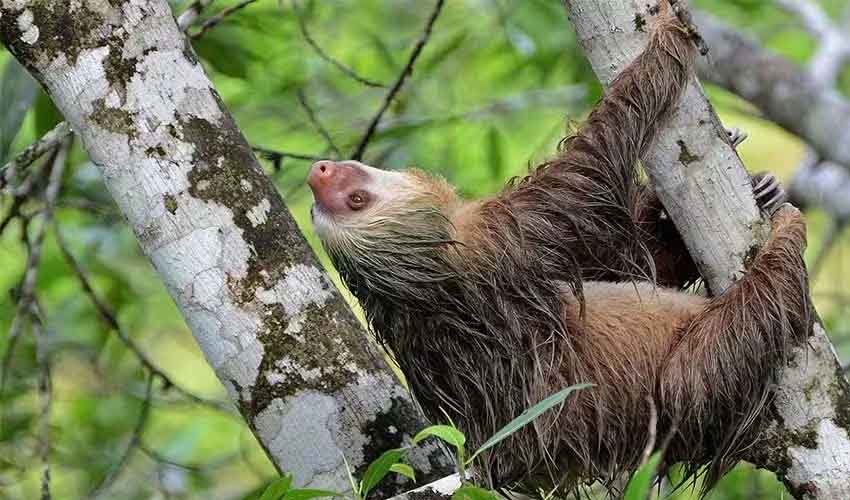Choloepus – Two-toed sloths
Technically, these should be called two-fingered sloths as they still have three toes but only two fingers on hands
A unique mammal that inhabits the forests of Central and South America. These curious creatures have captured the imagination of people around the world with their slow-paced lifestyle and remarkable adaptations to arboreal living.
One of the most remarkable aspects of two-toed sloths is their ability to perform almost all of their activities while hanging from trees. Whether they are eating, sleeping, mating, or even giving birth, sloths prefer to remain suspended from the branches of their forest homes. This unique behavior is made possible by their specialized anatomy,
including their long, hook-like claws and powerful grip. Despite having only two toes on each front foot (hence the name “two-toed” sloth), these creatures are surprisingly adept at clinging to branches and vines, allowing them to navigate their arboreal environment easily.
Interestingly, sloths possess only about half the muscle mass of other mammals of similar size. This seemingly paradoxical trait is an adaptation to their slow-paced lifestyle and energy-efficient metabolism. By conserving energy and minimizing unnecessary movement, sloths are able to survive on a diet of leaves, which provides them with the nutrients and energy they need to sustain their leisurely way of life.
While sloths are currently classified as “least concern” in terms of conservation status, their populations have been steadily declining in the wild in recent years. One of the primary threats to sloth populations is the destruction of their natural habitat due to deforestation and habitat fragmentation. As forests are cleared for agriculture, urban development, and other human activities, sloths lose vital food sources and shelter, forcing them into increasingly smaller and fragmented habitats.
Species in this genus
Hoffmann’s two-toed sloth
Can camouflage itself in trees with the help of algae growth on fur
Linnaeus’s two-toed sloth
The digestion process of tough leaves is very slow; it might even take up to 1 month to digest one meal



